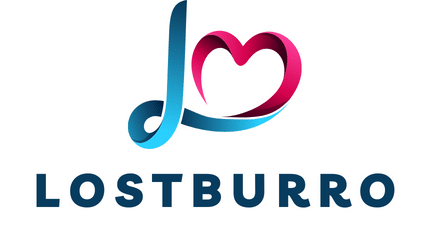Does the Incorporation of Gamification in Fitness Apps Increase Physical Activity Levels?

In recent years, the rise of technology has undeniably reshaped numerous aspects of our daily lives, including our approach to fitness and health. A significant development in this field is the advent of fitness apps. These digital tools aim not only to enhance the users’ physical activities but also to address the challenge of maintaining their motivation for an extended time. One innovative strategy they employ is the incorporation of gamification elements. This intriguing approach raises the question: does the inclusion of gamification in fitness apps genuinely boost physical activity levels?
Understanding Gamification in Fitness Apps
Before digging deeper into the effects of gamification in fitness apps, it is crucial to grasp its concept. Gamification, in the simplest term, refers to the use of game-like elements in non-game situations. These elements comprise points, badges, leaderboards, challenges, and rewards, among others. When applied to fitness apps, these components aim to enhance user engagement, motivation, and persistence, thus potentially increasing physical activity levels.
Cela peut vous intéresser : How Can Urban Greening Projects Improve Air Quality and Respiratory Health in Cities?
Fitness apps that have gamified features provide a more interactive and entertaining experience compared to traditional workout routines or unadorned fitness apps. They turn regular exercises into enticing activities or contests, making fitness more appealing and fun for the users. The gamified elements are cleverly designed to tap into the users’ innate desire for achievement, competition, and social recognition, which are powerful motivators for increased activity and adherence to fitness regimens.
Examining the Impact of Gamification on Physical Activity: Scholarly Studies
A growing body of scholarly studies has been dedicated to analyzing the impact of gamification on physical activity levels. These research efforts provide empirical evidence to the assumptions on how gamified fitness apps influence user behavior.
A voir aussi : How Can Personalized Music Therapy Be Used in Palliative Care Settings?
For instance, a study conducted by Hamari et al. (2014) found an increase in physical activity among participants using a gamified version of a fitness app compared to those using a non-gamified version. The users of the gamified app were more consistent in their exercise routines and were more likely to reach their fitness goals.
Another research by Patel et al. (2017) showed that fitness apps with gamification elements can not only increase physical activity but also improve the health outcomes of users. The study involved participants with chronic diseases, and the results revealed that those using the gamified fitness app showed significant improvements in weight loss, blood pressure, and overall physical health.
The Role of Social Features in Gamified Fitness Apps
One key aspect of gamification that contributes to increased physical activity is the integration of social features. These features include a platform for users to share their progress, compete with others, and receive support and motivation from a community of like-minded individuals.
Fitness apps that incorporate these social elements leverage the natural human inclination for social interaction and competition. They cultivate a sense of community among users, fostering an environment that motivates them to remain active and engaged.
According to a study by Zhang et al. (2017), social features in fitness apps significantly enhance users’ motivation to exercise. Their analysis found that the social interaction component in fitness apps positively influenced users’ adherence to their fitness routines. The competitive elements, such as leaderboards and challenges, likewise, stimulated the participants’ drive to stay active and beat their previous records.
Limitations and Opportunities: A Balanced Analysis
While the gamification of fitness apps has promising benefits, it is essential to recognize its limitations. The effectiveness of gamified elements can differ based on individual user’s traits and preferences. Some users may find the competitive nature of game-like features daunting or discouraging. On the contrary, others may thrive in such environments, spurring them to increase their physical activity.
Furthermore, it’s important to point out that while gamified apps can indeed play a role in increasing physical activity levels, they should not be considered a panacea for all fitness and health challenges. They are tools that can aid and heighten motivation, but the ultimate power to change lies within the users themselves.
However, with these limitations come opportunities for further improvement and innovation. Developers can create personalized fitness apps that adapt to the user’s preferences and abilities. In this way, these apps could cater more specifically to the diverse needs and inclinations of their users, truly maximizing the potential of gamification in promoting physical activity.
Drawing Insights: Learning from User Experiences
Just as important as the scholarly studies are the insights drawn from actual user experiences. The testimonials and reviews from people who have used gamified fitness apps provide valuable perspectives on their effectiveness.
Many users report that the gamified elements increased their motivation to exercise consistently. They highlight how the sense of achievement from earning points and badges, or the excitement from competing with others, made their workout routines more enjoyable. These experiences echo the evidence from the scholarly studies, further supporting the notion that gamification in fitness apps can indeed boost physical activity levels.
However, it is important to note that every user is unique. Not everyone will respond to gamified elements the same way. What works for one person might not work for another. Consequently, developers of fitness apps should continually seek feedback from their users, continuously refining their applications to cater to a wide array of preferences and needs.
As we have seen, there are numerous factors at play when it comes to the impact of gamification on physical activity levels. However, the evidence suggests a positive correlation. The integration of game-like elements with social features in fitness apps appears to enhance user engagement, motivation, and ultimately, physical activity.
User Personalization and Design: The Future of Gamified Fitness Apps
The future of gamified fitness apps appears promising, with scope for further improvements and innovations. One significant area for development is in the personalization and design of these apps to cater to an individual user’s traits and preferences.
While the idea of a ‘one size fits all’ app may work for some, it is clear from user testimonials and scientific studies that personalization is key to engagement and increased physical activity. The effectiveness of game design elements in fitness apps may vary depending on the user. For example, a user may prefer cooperative challenges over competitive ones or may find the earning of badges more motivating than accumulating points.
A meta-analysis by Sardi et al. (2017) noted that personalized, context-aware prompts and feedback based on user behavior were influential in promoting physical activity. Another study by Fanning et al. (2018) found that users’ age, gender, and fitness goals influenced their response to different gamification elements, further highlighting the need for personalized app features.
Developers could utilize the insights gained from these studies to create fitness apps that could adapt to user preferences and abilities. In this way, these apps could cater more specifically to the diverse needs and inclinations of their users, truly maximizing the potential of gamification in promoting physical activity.
Conclusion: The Intersection of Gamification and Physical Activity
Gamification in fitness apps has emerged as a powerful strategy to increase physical activity levels. By transforming routine exercises into engaging, game-like experiences, these apps tap into our inherent desire for achievement, competition, and social interaction. The interactive nature of these gamified interventions has been shown to effectively motivate users, encouraging them to maintain their fitness regimens and achieve their health goals.
However, as mentioned earlier, there is no ‘one size fits all’ solution. The effectiveness of gamification elements can vary between individuals, meaning that developers must constantly innovate and adapt their apps to meet the diverse needs and preferences of their users. User feedback and scholarly research can provide invaluable insights to guide these adaptations.
Despite its limitations, the incorporation of gamification in fitness apps offers exciting opportunities for the world of digital health. As technology continues to advance, we can expect to see more sophisticated and personalized fitness apps designed to motivate and inspire users to lead healthier, more active lifestyles.
In conclusion, while gamification alone may not be the magic bullet for all fitness and health challenges, it plays a crucial role in enhancing the efficacy of fitness apps. In combination with user commitment, personalization, and continual feedback, gamified fitness apps can indeed boost physical activity levels, contributing positively to our health and wellbeing.
